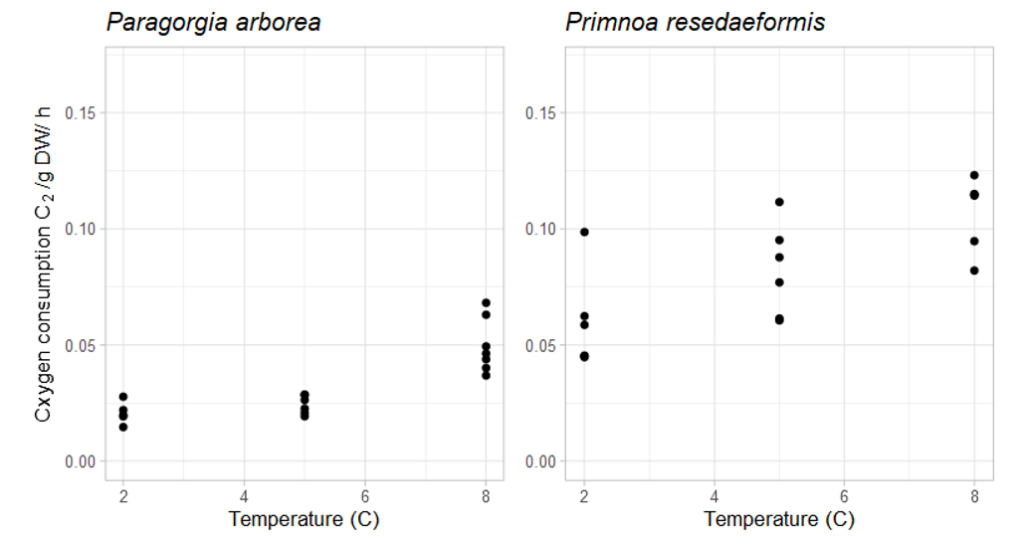Climate change produces many unknown impacts on both shallow and deep sea marine ecosystems which bear important scientific knowledge for research communities and humanity as a whole. Being an important habitat-forming deep-sea species, corals help shape rich benthic communities that host a variety of invertebrates and fish. Since the baseline knowledge of coral physiology is limited to only a few species, our current understanding of potential climate change impacts on coral communities is scarce. To increase that understanding, researchers from Dalhousie University recently conducted an experiment where they studied thermal tolerance of two common octocoral species in the Northwest Atlantic Ocean, namely Paragorgia arborea and Primnoa resedaeformis.

Experiment and Set-up
This experiment took place in a thermoregulated room on the NOAA research vessel Henry B. Bigelow. Its close proximity to the sampling site minimized transport and handling of the corals as well as provided ideal conditions for mimicking their actual habitat. Coral fragments along with water samples from depths when they occur were collected by a remotely operated vehicle ROPOS at 700 m. The corals were maintained at 4 different temperatures (2, 5, 8 and 12oC) for 48 hours, with subsequent measurements of their respiration occurring via closed-cell incubation.
The testing setup consisted of custom-made polypropylene chambers equipped with a mini water pump to maintain water circulation. These chambers were stabilized inside temperature-controlled water baths in a way that protected them from being affected by the ship movements. Oxygen and temperature measurements were collected using a four-channel FireSting-O2 sensor system with four oxygen robust probes (OXROB10) and external temperature sensor (TSUB21) from PyroScience. Each of the four oxygen sensors was calibrated and used for measurements in one of the four temperatures.
Data and Conclusion
During the experiment the researchers successfully collected respiration data from seven colonies of each coral species at 2, 5, and 8 oC. At 12 oC the coral fragments showed high mortality which allowed the researchers to determine the tipping points for the two species.

This data not only provided insights into the physiological knowledge of the understudied coral species and how they respond to different temperatures, but also leads to a better understanding of climate change impacts on deep-sea ecosystems.
Related products:
Contact us if you have any questions about these products and their applications.
